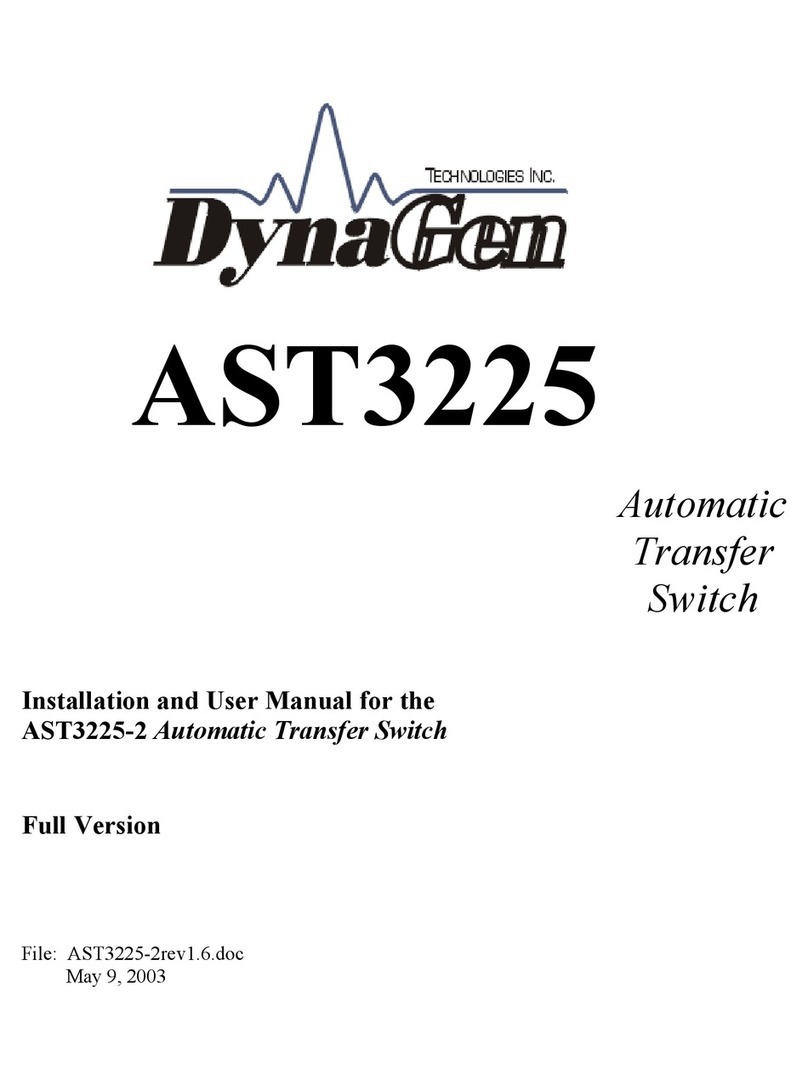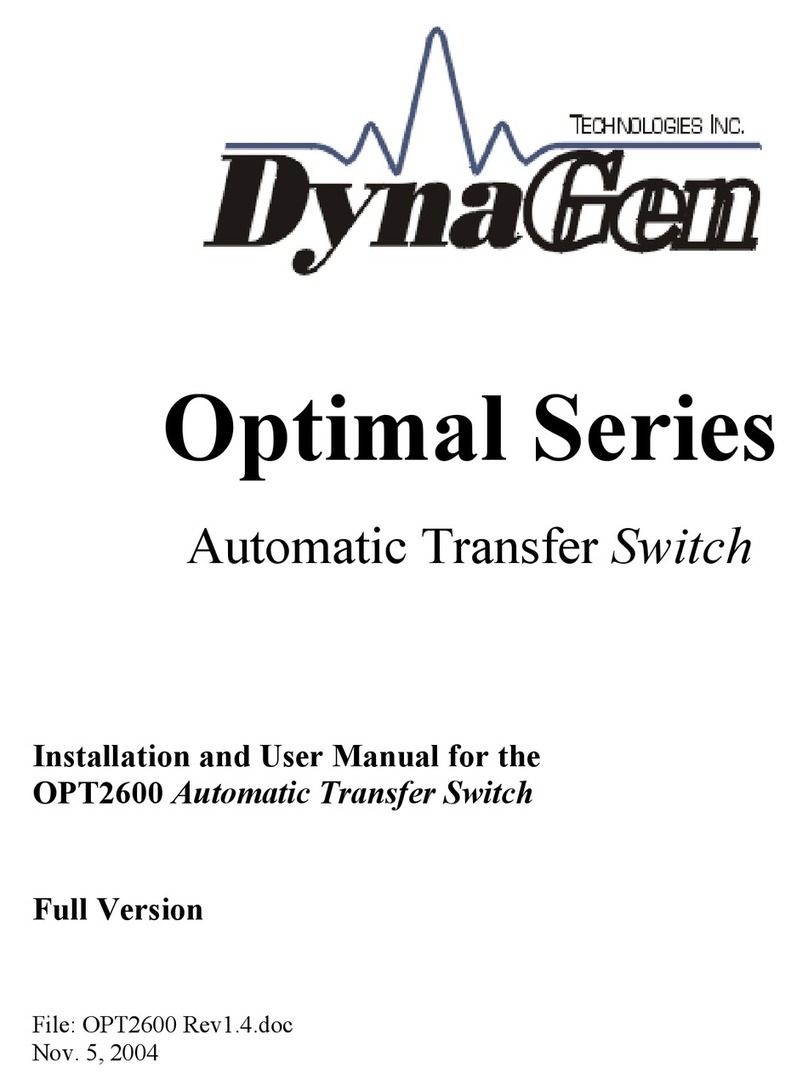
Manual for AST2225 Series Automatic Transfer Switch
8
3:1 REPLACEMENT PARTS LIST
PARTS DESCRIPTION Ref. PARTS DESCRIPTION Ref.
No. No.
Washer #10 Flat 1 Relay Module Wire Harness 55
Bolt 3/8"-16x2" grade 5 2 Engine Exerciser Wire Harness 56
Screw 6-32x1/2" machine binding head SS 3 Engine Exerciser 58
Screw 6-32x3/8" machine pan head SS 4 Ground Strap 59
Washer 3/8" flat 13/16"OD zinc plated 5 Label Package 60
Nut 3/8"-16 hex SS 6 Relay Module 61
Screw 10-24x3" machine round head zinc plated 7 Engine Exerciser Bracket 62
Washer #6 flat SS 8 Screw 1/4" x3/4” hexagon head 63
Screw 4-40x 5/8 machine round head zinc plated Phillips 9 Relay – 12VDC or 24 VDC 64
Flat Head Screw #6-32 x 1/2" Phillips zinc plated 10 Adjustable Voltage Monitor 65
Screw 8-32x5/16" machine binding head SS 11 M-6 Metric Hexagon Nut 66
Washer #8 spring lock SS 12 # 6 x ¼” Aluminum Spacer 67
Screw 1/4"-20x1/2" set hex socket cup point SS 13 6-32 Hexagon Nut 69
Spring pin 1/8"x1 3/8" coiled 14 Washer Nylon Shoulder 72
5/16"-18 x 5/8" socket head cap screw 15 Lever Arm Angle - Upper 73
Screw 10-32x1/4" SOC HD set SS 16 Lever Arm Cover Plate 74
Washer 5/16" spring lock 17 Slider Cover 76
Washer #6 spring lock SS 18 Motor Support Bracket 77
Spacer 6-32 1 1/2" aluminum 19 Pivot Support Bracket 78
Screw 1/4"-20x1" flat head 20 Neutral Block Insulator 80
Washer 1/4" spring lock 21 Neutral Block Plate 81
Nut 1/4"-20 hex 22 Cable 82
Washer #10 spring lock zinc plated 23 Back Panel Detail 83
Screw 10-24x5/8" pan head zinc plated 24 Enclosure Detail 84
Screw 6-32x1/4" machine binding head SS 25 Lever Arm Angle - Lower 85
Switch 26 Limit Switch Spacer 86
Gear Motor 27 Limit switch cam 87
Terminal Lug 28 Aluminum Crank Block 88
Molded Case Switch 30 Squeeze Release Latch 92
Terminal Lug 31 Screw #6-32 x1" Machine Binding Head 94
10 pole terminal block 32 Nylon Spacer - #6x1/2" 95
Actuating Arm Slider 48 Label Package 96
Slider Pin 49 TSC1 Wire Harness 97
Actuating Arm Pivot Block 50 TSC1 98
Spring Detail 51 Transformer & Wire Harness 99
Inner Roller Spacer 52
Outer Roller Spacer 53
Spring Roller 54





























